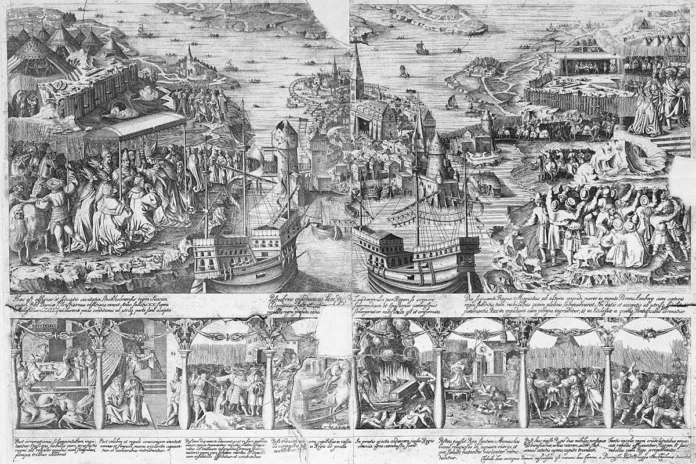Stortorget, also known as “The Great Square,” is the oldest and possibly most beautiful square in Stockholm. It is located in the vibrant heart of Gamla Stan, the historic old town of the city. Stortorget has a rich history that dates back to the 13th century. It is a major gathering spot and a must-see destination for tourists visiting Sweden’s capital.
Stortorget: A rich historical tapestry
Stortorget has an intriguing and turbulent past. Originally constructed as a marketplace, it evolved into the hub of social and commercial activity in medieval Stockholm. In addition to hosting many political rallies and festivities over the course of its long history, the square was the site of Sweden’s first pharmacy, which opened its doors in 1575.
The Stockholm Bloodbath
The square has hosted significant events, including the infamous Stockholm Bloodbath (Stockholms blodbad) in 1520, which marked a watershed in Swedish history when up to 100 Swedish aristocrats were executed by Danish King Christian II.
Between November 7 and November 9, 1520, the Stockholm Bloodbath took place, shortly after Christian II, the Danish king, was crowned king of Sweden. This horrific event saw the mass execution of approximately 100 clergymen and nobles on treason and heresy charges against the Danish monarchy. Christian II, influenced by Archbishop Gustav Trolle, ordered the executions, which were carried out in Stortorget. A member of the Sture Party, which had opposed Danish rule, was among the many victims.
Christian II’s notorious actions, which earned him the reputation as “Christian the Tyrant,” played a crucial role in causing the bloodbath. This event ultimately contributed to the collapse of the Kalmar Union. It led to the establishment of the Vasa dynasty, marking a significant turning point in Swedish history.
Architectural highlights
Beautiful architecture surrounds the square, reflecting its historical significance. Notable buildings include:
- Börshuset: Previously the site of the Stockholm Stock Exchange, this neoclassical building now houses the Nobel Museum, which celebrates the achievements of Nobel Laureates. King Gustav III commissioned its completion in 1788.
- Stortorgsbrunnen: Designed by architect Erik Palmstedt in 1778, the enormous well serves as the main attraction of Stortorget. Distances within Stockholm were once measured using this well.
- Bright facades: The intricate architecture and vibrant colors of the buildings on Stortorget make it one of the most photographed locations in Stockholm. The west side of the square is particularly charming, with buildings dating back to the 17th and 18th centuries.
Modern-day Stortorget
Today, Stortorget is a thriving center with cafes, shops, and tourists eager to experience its charm. Popular locations include Pharmarium, a bar that imaginatively integrates historical elements into its menu, and Chokladkoppen, which is well-known for its delicious pastries and coffee. The square also holds an annual Christmas market, which attracts tourists with its traditional handicrafts and festive food.
Guided tours and leisurely strolls along Gamla Stan’s cobbled streets are two ways to discover its rich history. The area allows visitors to take in the atmosphere while discovering hidden gems like quaint boutiques and winding alleys. Its easy accessibility by foot enhances this experience.
Conclusion
Stortorget is a prime example of Stockholm’s rich cultural heritage and history. In addition to offering a glimpse into Sweden’s past, Gamla Stan offers guests a warm space to relax and enjoy the present.
Whether you enjoy local specialties at the nearby cafes or photograph the stunning architecture, you will find Stortorget to be a memorable experience in the heart of Stockholm.







